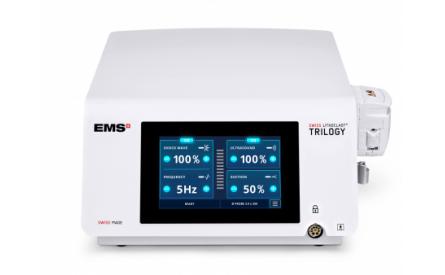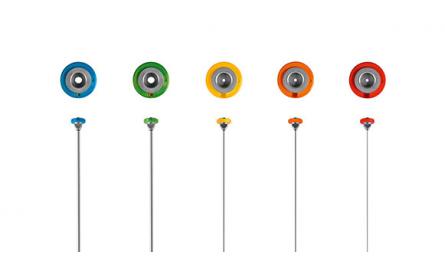Evaluation of intrarenal pressure stability at different lithotripter suction settings in a porcine kidney model
Strittmatter, F., Nagele, U., Schachtner, J. et al. Evaluation of intrarenal pressure stability at different lithotripter suction settings in a porcine kidney model. World J Urol (2021). https://doi.org/10.1007/s00345-021-03679-5
Publication Takeaways
When using the LithoClast® Trilogy, a suction setting of 10% seems to be optimal for the treatment of urinary calculi when applying suction continuously with the Storz MIP-M and MIP-L nephroscopes.
Publication overview:
Introduction and Objective:
In vitro and in vivo studies have shown the safety and effectiveness of Swiss LithoClast® Trilogy for PCNL and mini PCNL procedures. However, different device settings in combination with a certain endoscope can influence the outcome. Therefore, this study aimed at identifying adequate pressure stability in the renal pelvis without compromising the efficiency of the Swiss LithoClast® Trilogy.
Methods:
Lithotripter:
The Swiss LithoClast Trilogy is a dual-energy lithotripter using ballistic and ultrasound energy simultaneously. Furthermore, through one single probe, simultaneous suction can be applied during the fragmentation process for fast, easy, and safe evacuation of the stone fragments for an optimum stone-free rate. For this, the device includes a peristaltic suction pump with an adjustable speed of 10% to 100% in 10% increments. This suction pump can also be used fully independently. This is the power of 3 of the Swiss LithoClast® Trilogy.
Nephroscopes:
The Storz MIP-M was used for a mini PCNL setting.
- The nephroscope has an outer diameter of 12 FR and a working channel of 6.7 Fr, allowing for instruments up to a size of 5 Fr
- The single-use probe FR-250 with a diameter of 1.5 mm and a length of 440mm was used for the Storz MIP-M endoscope
- The corresponding Amplatz sheath has a 16.5 Fr diameter and a length of 15 cm
The Storz MIP-L was used for a standard PCNL setting
- The nephroscope has an outer diameter of 19.5 Fr and a working channel of 12.4 Fr, allowing for instruments up to a size of 11.5 Fr
- The single-use probe FR-248 with a diameter of 3.4 mm and a length of 445 mm was used for the Storz MIP-L endoscope
- The corresponding Amplatz sheath has a 23/24 Fr diameter and a length of 15 cm
Porcine model:
A freshly extracted cadaveric porcine kidney was used for this study. The kidney was punctured through the upper calyx in a retrograde fashion. The intrarenal pressure levels were evaluated through a single lumen 4.5 Fr pressure catheter via an Ellipse-Andormeda® urodynamic system.
Results:
Pressure stabilized at 19 cm H2O with the MIP-M at 1 m gravity irrigation with no instrument introduced. After inserting the 1.5 mm probe, the pressure dropped to 5 cm H2O. With a suction setting of 10%, the pressure stabilized at 3 cm H2O and remained stable for the maximum time of 120 s. After increasing the suction to 20, 30, 40, and 50%, the pressure drop time was recorded to be 0 after 22, 14, 11, and 8 s.
Using the MIP-L, pressure stabilized at 44 cm H2O and decreased to 8 cm H2O after inserting the 3.4 mm probe. With 10% suction, a pressure stabilization was measured at 2 cm H2O and remained stable for 120 s. At suction levels of 20 and 30%, the pressure drop time to 0 was 6 and 5 s. With a 10% suction, removing stones was efficient, and the kidney's filling volume was maintained.
Link: https://link.springer.com/article/10.1007%2Fs00345-021-03679-5#citeas



